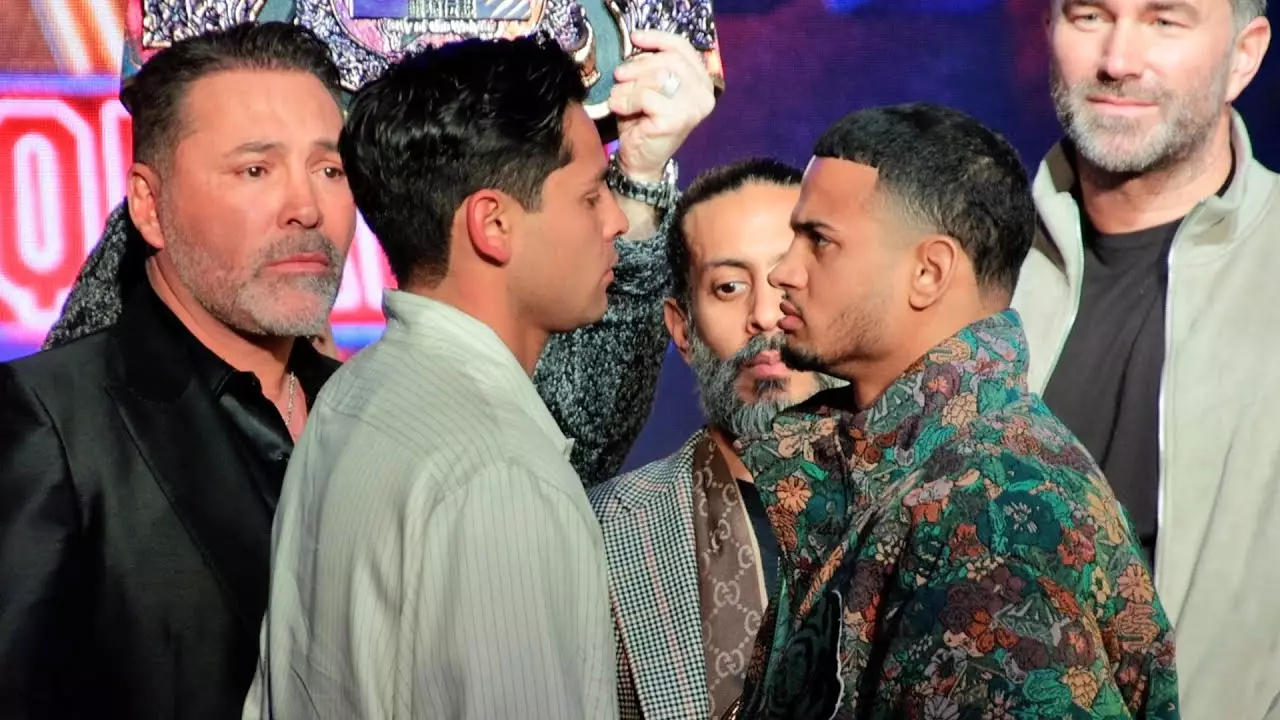Ryan Garcia, the rising star of boxing, has seized headlines once again as he prepares for his high-stakes bout against Rolando ‘Rolly’ Romero on May 2nd. The staggering $20 million payout he’s set to receive for this fight — which many critics have labeled a mere tune-up — raises eyebrows and demands a deeper analysis of what this means for him, for the sport, and for future matchups in the boxing world.
With a record of 24 wins and just a single loss, Garcia’s financial windfall reflects not only his drawing power but also a shift in the landscape of professional boxing. Previously, salaries in boxing were assumed to be the province of only the most seasoned veterans or champions. However, Garcia’s lucrative contract signals a new era where even young, relatively inexperienced fighters can command jaw-dropping sums. It goes beyond monetary value; it emphasizes branding, marketability, and the risk of underestimating a fighter’s potential impact on the scene.
Turki Alalshikh’s Role in Changing the Game
In a recent interview, Garcia took a moment to praise Turki Alalshikh, the Saudi Arabian figure who has been pivotal in reshaping boxing’s business arrangements. Garcia’s inclination to work with Alalshikh for the entirety of his career speaks volumes about the influential role that promoters play in a fighter’s success. Alalshikh’s efforts to line up significant fights not only for Garcia but also for Devin Haney create a strategic environment where boxers can focus on their performances without worrying excessively about the politics behind matchups.
What’s particularly compelling is how Garcia underscored Alalshikh’s commitment to ensuring that fighters don’t have any “excuses” when it comes to facing their opponents. This dedication to cutting out any potential financial reservations is a refreshing deviation from traditional boxing politics where money often complicates fight arrangements. In a way, Alalshikh represents a progressive movement in boxing, encouraging athletes to prioritize competition over negotiation squabbles.
The July Rematch vs. Hurdles Ahead
The notion that the upcoming fights, including Garcia’s clash with Romero and Haney’s match against Jose Ramirez, may not hinge on winning raises important questions. If both fighters are positioned to meet in October regardless of the May 2 outcomes, it removes layers of pressure that often cloud a fighter’s performance. Garcia faces Romero, who holds a sketchy recent record, while Haney’s fight against Ramirez is laden with more uncertainty given Ramirez’s established pedigree in the ring.
Garcia’s confidence might be bolstered by the clear trajectory laid out for the future, but one has to wonder if this leads to complacency. Should boxing become a mere stepping-stone for financial gain, will the sport suffer, or will competitors rise to the occasion in more competitive bouts? The risk of a lucrative payday overshadowing the authentic pursuit of greatness is a concern when financial incentives take center stage.
The Unfolding Dynamics of Fighter Pay
As Garcia remains a focal point in the $20 million conversation, it begs the question of how this plays into the earnings of his contemporaries, particularly Haney, who is fighting on the same card against a more formidable opponent. The financial disparity emphasizes issues of equity in the sport and highlights how branding, popularity, and promoter influence can shape earnings in unpredictable ways.
Moreover, the interest in the paychecks linked to fighters hints at an emerging trend of “showcasing” in the professional sports arena. With each significant payout, the sport’s narrative shifts, allowing younger fighters to push past the traditional confines of boxing superstars. The focus now spans beyond mere fighting talent; charisma, image, and strategic partnerships play equally pivotal roles in elevating boxing careers.
The future of boxing is fast evolving, and as Ryan Garcia captures a part of it with his colossal paycheck, audiences can expect a new breed of fighters who will redefine what it means to be successful in the ring, not solely by victories but through complex financial landscapes that intertwine with the sport itself. The upcoming matches will set the stage for a new era in which fighters, promoters, and audiences interact more dynamically than ever before.

